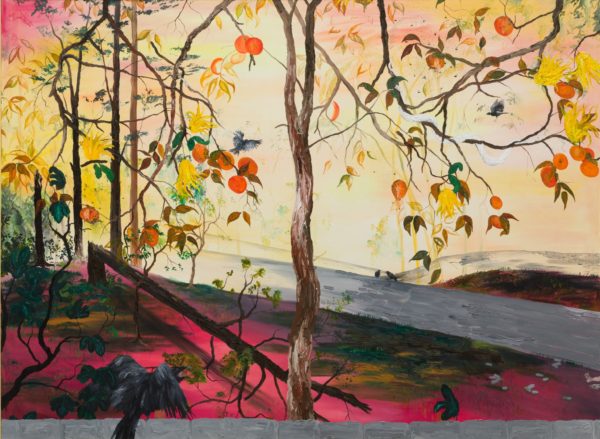Morgan Mandalay‘s paintings of tainted jungle paradises are radiant with color and lush verdure, yet they bloom with inklings of mortality. Dead fishes hang amid the umbrage of burning orchards where cadaverous human arms emerge from lurid thickets. Figs and oranges putrefy on snake-inhabited trees thronged by swarms of insects. In Rotten Core (2019, pictured above), ruffled ravens querulously caw in apparent protest of some unseen interloper having just killed the man whose lifeless feet protrude into the scene’s right side. And as though none of this belonged to the real world anyway, toothy cartoon mouths frame scenes such as Uriel (2018), giving the impression that a band of roguish giants were on the verge of swallowing entire jungles. Mandalay applies biblical themes of Eden to more modern subjects of exile and colonial invasion. The artist has mentioned as an influence his grandfather’s first-hand tales of his Cuban motherland and the Castro revolution. Colonizing Paradise, a 2015 book by Jefferson Dillman, discusses various ways in which colonizers estimated Caribbean islands as Edenic gardens embedded with pitfalls—a fraught legacy recalled by Mandalay’s paintings of wonderlands gone wrong. Would walls demarcate paradise? If so, it certainly seems as though they would be comelier, or at least friendlier, than the tall dismal gray one in Tree of a Thousand Fruit (unfulfilled) (2019), which sprouts a bloodshot eye as though betraying a prying mind beyond its mortar.
Klowden Mann
6023 Washington Blvd.
Culver City, CA 90232
Show runs through May 4


